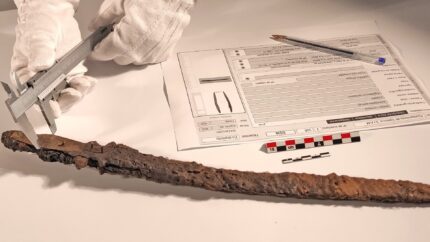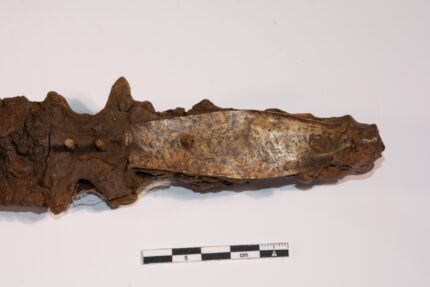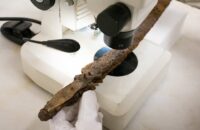
Founded by Roman consul Decimus Junius Brutus Callaicus in 138 B.C. as a veterans colony, Valencia was conquered by invading Muslim forces in 714 A.D. The Islamic city, known as Balansiya in Arabic, prospered and by the 10th century was a regional hub of trade. The Moorish taifa kingdom of Valencia, established in 1010, was frequently troubled with dynastic conflict, assassination and for one brief stretch at the end of the 11th century, conquest by the Castilian knight and Spanish national hero El Cid.

The sword, which has been restored, has been dated within the framework of the archeology scholarship organized annually by the Valencia City Council. In the 2023-2024 edition, the scholarship has been dedicated entirely to the analysis of metallic objects. The fact that the beneficiary of this scholarship is an archaeologist specialized in metals has favored the exact dating of the sword.
The Councilor for Cultural Action, Heritage and Cultural Resources, José Luis Moreno, has assured that “thanks to the archeology grant organized by the Valencia City Council, the archaeologist José Miguel Osuna is carrying out a detailed analysis study of metal objects ranging from the Roman era to the late medieval period and where a new and exceptional discovery has come to light, which we have called the Excalibur of Roc Chabàs due to its similarity to the legendary sword of King Arthur.” According to the councilor, “this sword has a unique design that gives it great archaeological and heritage value, so we have a new treasure in this Islamic Excalibur and a historical legacy of ancient Balansiya.”
* This article was originally published here









No comments:
Post a Comment